The One Big Secret to Making Great Bird Photographs
With Arthur Morris/BIRDS AS ART — Free NANPA Webinar
Yes, boys and girls. There really is just one big secret. It will be revealed at the very end of the webinar. Join me on July 13 from 4:00 to 5:00 pm EDT to learn a ton. Click here to register. This program is free and open to all. Covered topics will include seeing the shot, finding the best perspective, getting close to free and wild birds, the importance of wind direction in bird photography, understanding the direction and qualities of natural light, flight photography tips, getting the right exposure, image composition and design, and lots more.
What’s Up?
There was a huge, anvil-shaped cloud on the eastern horizon at sunrise on Thursday morning at ILE. I walked the pier with the 400 f/2.8/2X/a1 combo experimenting with mid-range shutter speed intentional blurs. I have been learning a lot recently using shutter speeds in the 1/125th to 1/250th second range for flight. This morning I was somewhat amazed by the results. Photos and more soon. After my pier-walk, I worked both crane/colt families and got some good stuff.
Be sure to read all the way down to the Bummer item; you will learn a ton along the way.
Today is Friday 8 July 2022. The forecast for this morning is for partly cloudy and still. I will be heading down to the pier early to see what I can learn. Wherever you are and whatever you are doing, I hope that you too have a great day. This blog post took about 90 minutes to prepare and makes one hundred ten days in a row with a new one.
Please remember to use the B&H and Amazon links that are found on most blog pages and to use the BIRDSASART discount code at checkout when purchasing your new gear from Bedfords to get 3% back on your credit card and enjoy free second-day air FedEx. Please, also, consider joining a BAA IPT. You will be amazed at how much you will learn!
JAX
If you would like to join me for the July 15-19 Jacksonville IPT, or for some In-the-Field sessions there on those dates, please get in touch via e-mail.
Follow me on Instagram here. I am trying to feature both new and old images, especially images that have not appeared recently on the blog. Or search for birds_as_art.
BIRDS AS ART Image Optimization Service (BAA IOS)
Send a PayPal for $62.00 to birdsasart@verizon.net or call Jim at 863-692-0906 and put $62.00 on your credit card. Pick one of your best images and upload the raw file using a large file sending service like Hightail or DropBox and then send me the link via e-mail. I will download and save your raw file, evaluate the exposure and sharpness, and optimize the image as if it were my own after converting the raw file in Adobe Camera Raw. Best of all, I will make a screen recording of the entire process and send you a link to the video to download, save and study.
Induro GIT 304L Price Drop
Amazingly, we have two, brand-new-in-the-box Induro GIT 304L tripods in stock. They are $699.00 each (were $799.00) and the price now includes insured ground shipping to the lower 48 states. Weekday phone orders only: 863-692-0906.
|
|
|
This image was created on 4 July 2022 at Huguenot Memorial Park near Jacksonville, FL. I used handheld Sony FE 24-105mm f/4 G OSS lens )at 24mm) and The One, the Sony Alpha 1 Mirrorless Digital Camera.. ISO 1000. The exposure was determined by Zebras with ISO on the rear wheel: 1/125 second at f/4 (wide open) in Manual mode. RawDigger showed that the raw file brightness was dead-solid perfect. AWB at 6:31:06am on an obviously cloudy morning right about the time of sunrise. Tracking: Spot S/AF-C with Bird-Eye/Face Detection performed perfectly as it held focus on the closest bird. Click on the image to enjoy the high-res version. Image #1: Large, Surreal Storm Cloud on the Eastern Horizon |
The Value of the 24-105mm Lenses
As soon as I got out of my car on the morning of the Fourth of July and saw the huge storm cloud out over the Atlantic, I knew that the 24-105 would come in handy. The 70-200 would not have been wide enough. So, for the first time in recent memory, I donned my X-tra Hand vest and stuck the short zoom lens in one of the pockets, protected by a woolen watch cap. It was the ticket to success once the sky brightened up a bit. Even though the cloud was spectacular in life, understand that the properly exposed raw file was washed out and boring. Exposing to the right minimizes noise; you bring your raw files to life during the raw conversion and then in Photoshop.
|
|
|
This image was also created on 4 July 2022 at Huguenot Memorial Park near Jacksonville, FL. Standing at full height, I used the no-longer-available Induro GIT 304L/Levered-Clamp FlexShooter Pro-mounted Sony FE 600mm f/4 GM OSS lens with the Sony FE 1.4x Teleconverter, and The One, the Sony Alpha 1 Mirrorless Digital Camera.. ISO 1600. The exposure was determined by Zebras with ISO on the rear wheel: 1/250 second at f/5.6 (wide open) in Manual mode. RawDigger showed that the raw file brightness was within 1/6 stop of being perfect. AWB at 7:27:53am on a thankfully then-cloudy morning. Tracking: Spot S/AF-C with Bird-Eye/Face Detection performed perfectly. Click on the image to enjoy the high-res version. Image #2: Laughing Gull — large chick flicking wing |
Big Cloud Prayer Answered
When the morning forecast calls for a strong west/southwest wind and clear skies, most of the birds will be flying, landing, standing, and taking off into the wind and thus away from you. In those conditions, a cloud on the eastern horizon can be a Godsend, the bigger the better. When the sun is covered by a decent cloud, sun angle barely matters — you are free to shoot in almost any direction. Even faint light on the cloudiest of days has a direction, but rather than being restricted to photographing birds in a 20° or 30° arc on either side of sun angle, you can work those in a 180° or even greater arc.
At 8:07am, the sun made its way over the storm cloud and the soft light party was over.
Juvenile Wing-flicking and Wing-Dragging
Young terns and gulls are often seen flicking or dragging their wings. When I first saw this behavior, I assumed that the juvenile bird had a broken wing. Conversations with researchers and personal experience revealed that many of the birds exhibiting this behavior are just fine. The nearly fledged gull in Image #2 was flicking and dragging its left wing. Last year at JAX I was watching a young Royal Tern dragging its wing around, looking helpless. Until it jumped into the air and took flight with ease.
What Happened to Fat Boy?
With my right wrist and my right shoulder bugging me after handholding the 400 f/2.8 for two days, I went to the tripod-mounted 600mm f/4. I took the lens off the tripod and hung it on my left shoulder via the lens strap when I was moving along on the beach. That turned out to be much more forgiving. While it’s great to have complete freedom when working without a tripod, I, like Rafael Nadal, have my limits.
|
|
|
This image was also created on 4 July 2022 at Huguenot Memorial Park near Jacksonville, FL. Again, I used the handheld/ankle-podded Sony FE 600mm f/4 GM OSS lens with the Sony FE 1.4x Teleconverter, and The One, the Sony Alpha 1 Mirrorless Digital Camera.. ISO 1600. The exposure was determined by Zebras with ISO on the rear wheel: 1/500 second at f/5.6 (wide open) in Manual mode. RawDigger showed that the raw file brightness was within 1/6 stop of being perfect. AWB at 7:47:33am on a brighter but still cloudy morning. Tracking: Spot S/AF-C with Bird-Eye/Face Detection performed perfectly. Click on the image to enjoy the high-res version. Image #3: Laughing Gull — large chick begging |
Bummer
I was thrilled that I was able to get perfectly parallel to the two subjects and quickly find and frame the birds on the rear monitor — that can be a challenge at times. When the chicks peck at the adult’s neck and bill, that stimulates the parent bird to regurgitate the meal, often partially digested bits and chunks of fish. When the adult bird began to vomit up breakfast, it turned its head completely away from me. By force of habit, I quit shooting for 20 seconds. I did keep a single frame that shows the chick swallowing some orange gunk, but both the adult and the chick were angled away from me.
The Lesson
Subject-to-sensor-plane orientation needs to be considered carefully whenever you press the shutter button. If a bird’s tail is closer to you than its head, it is difficult to create a memorable, dramatic, pleasing, and/or artistic photograph. If you have a good image with the bird facing away, feel free to shoot me a sharpened 2400 pixel wide or tall JPEG via e-mail for a short free critique. Please type the words “Facing Away” into the Subject Line.
Flight Photography at Jacksonville Till You Can’t Lift Your Lens! with Arthur Morris/BIRDS AS ART
Join me on the beach at Huguenot Memorial Park to learn about photographing terns in flight. 8,000 pairs of Royal Terns nest there and there are birds in the air all the time, often carrying all kinds of fish and crabs for their young. Learn about how the relationship between the wind and the sun impacts flight photography and about the best gear for shooting birds in flight. Join me on a workshop at Jacksonville this summer.
Cute & Beautiful: Photographing Chicks in Jacksonville, FL with Arthur Morris/BIRDS AS ART
There is an amazing beach near Jacksonville, FL where 8,000 pairs of Royal Terns and 12,000 pairs of Laughing Gulls (along with a few other species) breed each summer. As this video shows, photographing the chicks is easy in the summer. And there is tons of great flight photography as well. If you want to improve your bird photography skills, consider joining me on an Instructional Photo-Tour (IPT).
|
|
|
Click on the composite image to enjoy the incredible quality of the hi-res JPEG. Clockwise from upper left clockwise and back around to the center: Royal Tern in flight with squid for chick; Royal Tern chick on beach; Royal Tern in flight with shrimp for young; Royal Tern chick — double overhead wing stretch; Royal Tern landing with greenback for chick; Royal Tern in flight with juvenile mahi mahi for chick; Brown Pelican — large chick preening; Laughing Gull in fresh juvenal plumage; Royal Tern chick begging; Many Royal Terns with many chicks on face of dune. |
Jacksonville IPT: 4 FULL DAYS — the afternoon of FRI 15 JULY thru the morning of TUES 19 July 2022: $2099.00 (Limit 6 photographers/Openings: 5)
I first visited the breeding bird colony at Jacksonville in late June 2021. I was astounded. There were many thousands of pairs of Royal Terns nesting along with about 10,000 pairs of Laughing Gulls. In addition to the royals, there were some Sandwich Terns nesting. And there are several dozen pairs of Brown Pelicans nesting on the ground. Flight photography was non-stop astounding. And photographing the tern chicks was relatively easy. Folks could do the whole trip with the Sony 200-600, the Canon 100-500 RF, or the Nikon 500 PF or 200-500 VR. With a TC in your pocket for use on sunny days. Most of the action is within 100 yards of where we park (on the beach). As with all bird photography, there are times when a super-telephoto lens with either TC is the best tool for the job.
Morning sessions will average about 3 1/2 hours, afternoon sessions about 1 1/2 hours. On cloudy mornings with favorable winds, we may opt to stay out for one long session and skip the afternoon, especially when the afternoon forecast is poor. Lunch is included on the first three days of the IPT and will be served at my AirBnB. We will do image review and Photoshop after lunch.
We will be based somewhere west and a bit north of Jacksonville where there are many AirBnB possibilities. The deposit is $599.00. Call Jim at the office any weekday at 863-692-0906 to pay by credit card. Balances must be paid by check.
|
|
|
Click on the composite image to enjoy the incredible quality of the hi-res JPEG. Clockwise from upper left clockwise and back around to the center: Royal Tern feeding chick; Royal Tern/4-week-old chick; ink-stained Royal Tern in flight with squid for chick; Royal Tern/3-week-old chick begging; Brown Pelican in flight on white sky day; fresh juvenile Laughing Gull on clean beach; Laughing Gulls stealing fish from Royal Tern; tight shot of Royal Tern in flight with fish for young. |
What You Will Learn on a Jacksonville IPT
- 1- First and foremast you will learn to become a better flight photographer. Much better.
- 2-You will learn the basics and fine points of digital exposure. Nikon and Canon folks will learn to get the right exposure every time after making a single test exposure, and SONY folks will learn to use Zebras so that they can be sure of making excellent exposures before pressing the shutter button.
- 3- You will learn to work in Manual exposure mode even if you fear it.
- 4- You will learn to evaluate wind and sky conditions and understand how they affect bird photography, especially the photography of birds in flight.
- 5- You will learn several pro secrets (for each system) that will help you to become a better flight photographer.
- 6- You will learn to zoom out in advance (because the birds are so close!) 🙂
- 7- You will learn how to approach free and wild birds without disturbing them.
- 8- You will learn to spot the good and the great situations.
- 9- You will learn to understand and predict bird behavior.
- 10- You will learn to design pleasing images by mastering your camera’s AF system.
- 11- You will learn to choose the best perspective.
- 12- You will learn to see and control your backgrounds.
- 13- You will learn to see and understand the light.
- 14- You will learn to see and create pleasing blurs in pre-dawn situations.
- 15- You will learn to be ready for the most likely event.
The best news is that you will be able to take everything you learn home with you so that you will be a better photographer wherever you are and whenever you photograph.
Typos
With all blog posts, feel free to e-mail or to leave a comment regarding any typos or errors.

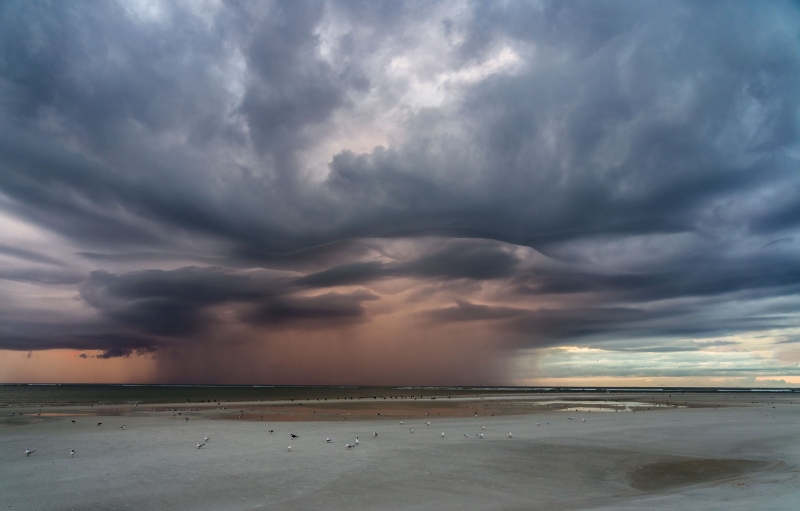
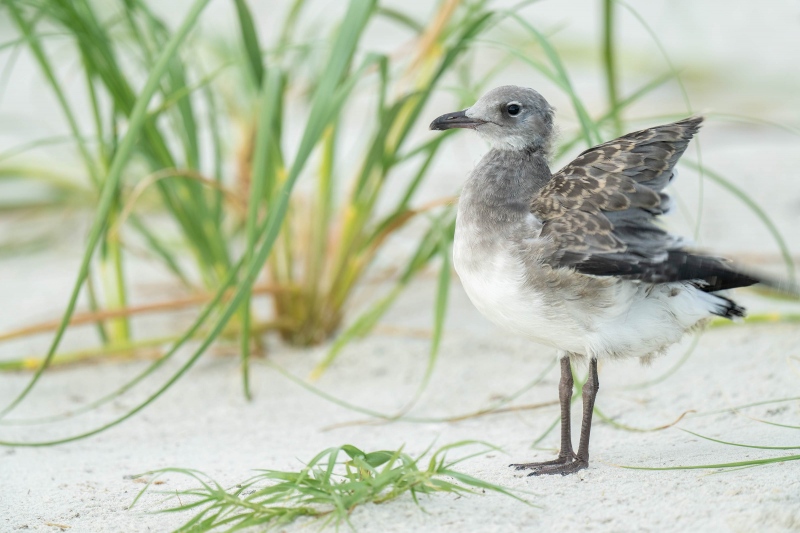
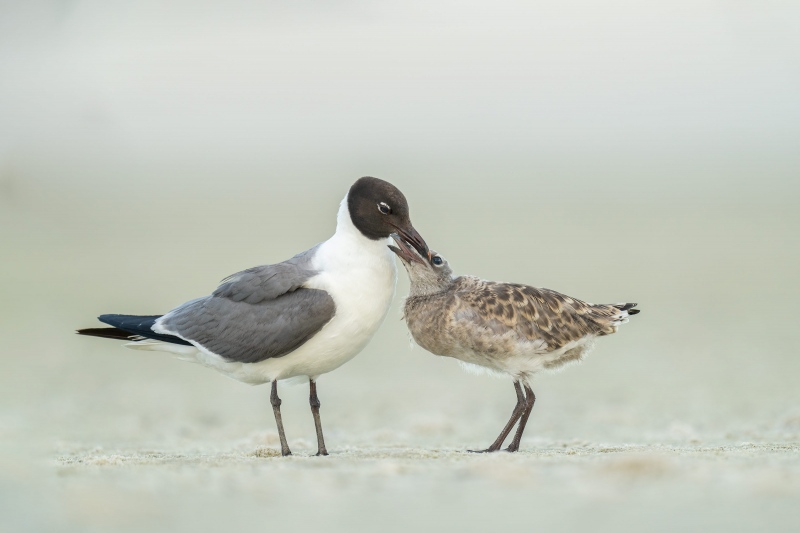
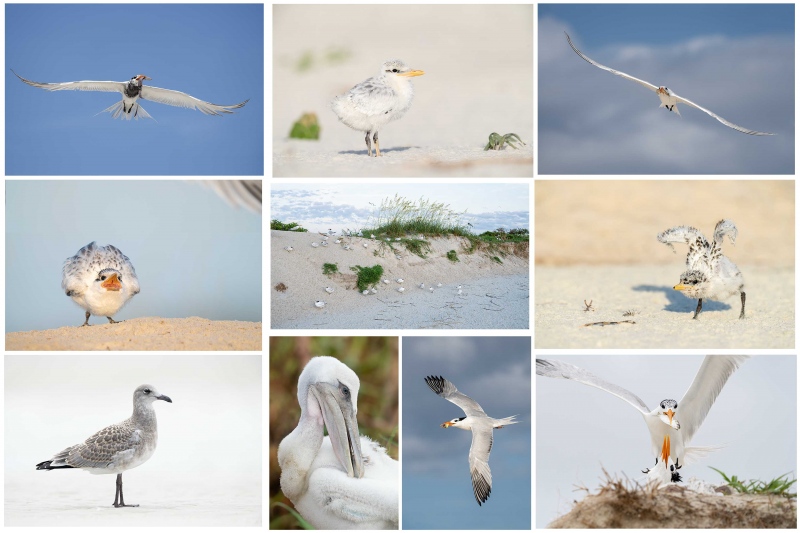
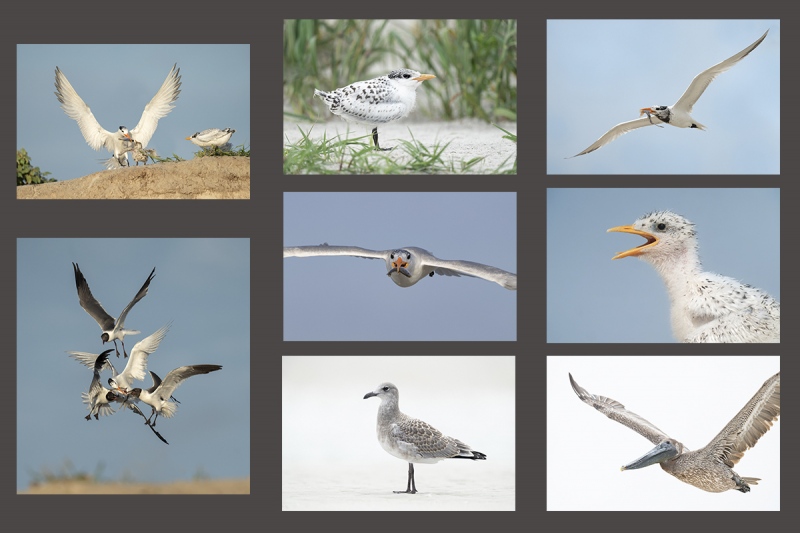













Artie, for a great facing-away image, I’d nominate your 2nd gator with a Great Egret chick the other day. Both images were wonderful, but I much preferred the 2nd one, as it was clearer what had happened, and the gator and bird formed a interesting X-pattern. Granted that while the gator was facing away, the dead chick wasn’t.
I also think a bird facing away can work if there’s beautiful water or something else the bird is looking at or if it appears the bird–especially a migratory species–is ready to depart. Or if one bird is chasing another. Exceptions to be sure.
Thanks, Cliff. I agree on the bird looking out at something great, but I liked the first gator image a lot better. Different strokes. I have not received any JPEGs yet 🙂
with love, a
Do you ever use mechanical shutter mode?
Only when I need shutter speeds > 1/2 second.
with love, artie
Spectacular image of the storm cloud with birds.
Thanks. I agree 🙂
with love, artie
I like the storm and that it’s not dead center. off to the left makes it!
Thanks, Anthony. That’s because I needed to include the dried up pool in the lower right corner.
a
I have never seen a laughing gull chick, thanks for including it in your blog.
Thanks, Pat. Right now there are thousands of them at Huguenot Memorial Park.
with love, artie